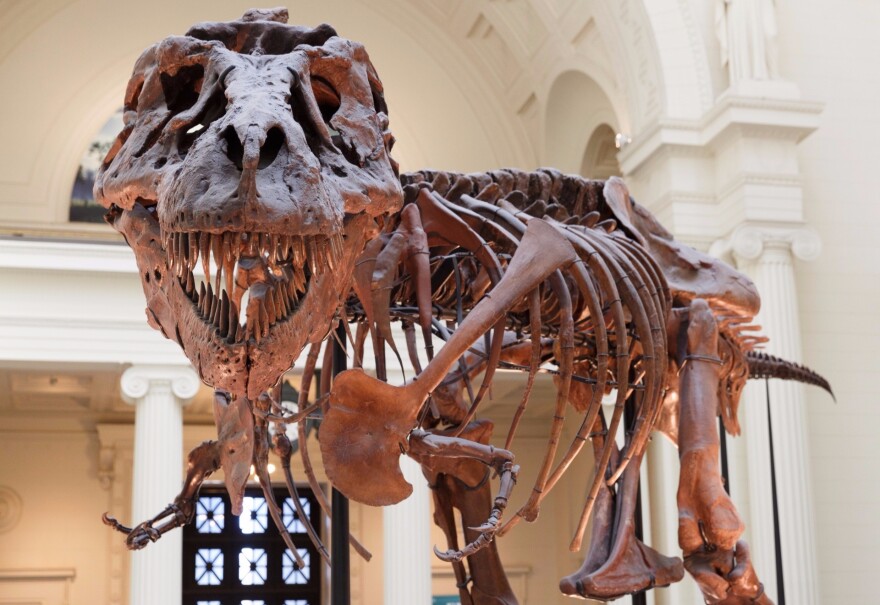The fearsome Tyrannosaurs Rex could bite down with nearly 8,000 pounds of force, almost twice as strong as the bite of the Australian salt water crocodile. That's just some of the findings from a Florida researcher who teamed up with a paleontologist in Oklahoma to model and test the bite of T. rex.
Using existing models of how crocodiles bite, and comparing those findings to the bites of birds, the two researchers found the bite of T. rex was so strong it allowed the "tyrant lizard" to shear through the hardest parts of its prey and chew up its victims' bones. That unlocked nutrients few other animals could access, because as their research shows, only specially-evolved teeth and jaws (like those seen in modern mammalian predators) can generate the power—and withstand the force—of chewing through bone.
Dr. Gregory Erickson, a Florida State University professor of Biological Science, and Dr. Paul Gignac, an Oklahoma State University assistant professor of paleontology, join Gulf Coast Live to discuss their research into the punishing bite of Tyrannosaurus Rex, and how the dinosaur's teeth, jaws, and bite pattern make for one of the most powerful bites ever known in the animal kingdom.




